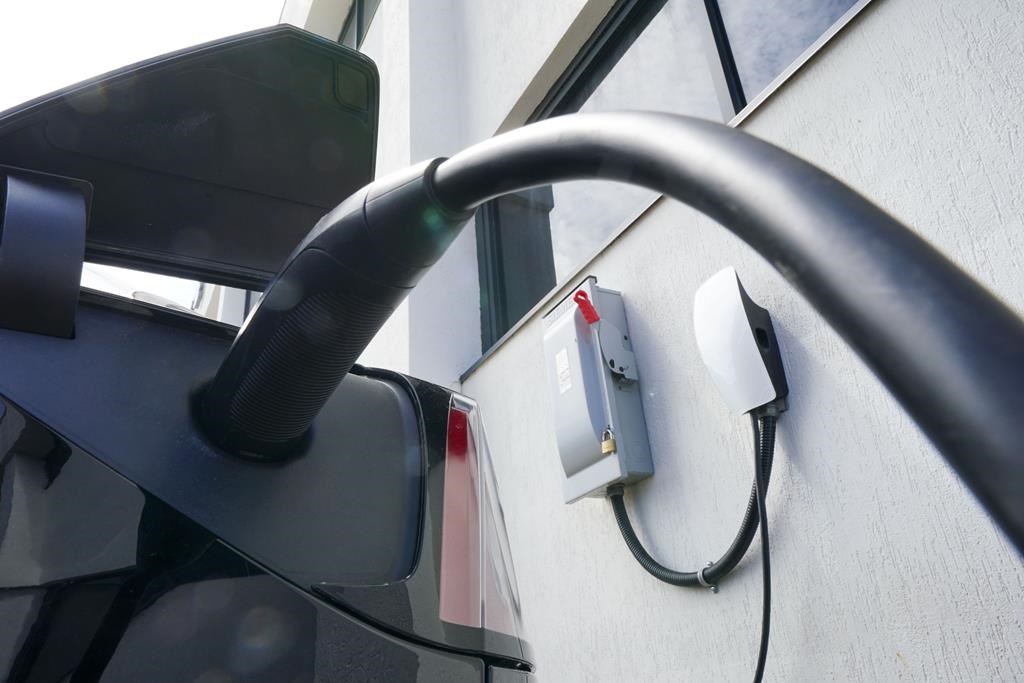Shipping costs peak ahead of holiday season, prices likely to rise
Posted August 26, 2021 9:20 am.
Last Updated August 26, 2021 11:30 am.
VANCOUVER (NEWS 1130) – Your desire to shop from home during the COVID-19 pandemic may well be the same reason you’re likely to pay significantly more for gifts and other products this fall and holiday season.
A variety of reasons has led to a major spike in global shipping costs.
This most recent spike since July 21 in global shipping rates from East Asia to North America’s West Coast (which includes all ports along the coast in Canada, the U.S., and Mexico) has been largely due to natural disasters in China, including the recent flooding in Zhengzhou, a major transportation hub in China’s interior, as well as port issues in Ningbo, on China’s east coast.
However, a steady rise in prices has mostly been driven by our demand for ordering goods online from the start of the pandemic, notes Freightos senior analyst Judah Lavine.
“It really started over a year ago. Basically, I think as a lot of us know, as we settled into the reality of being at home, a lot of us who were fortunate enough to have money to spend were spending it more on goods than on services, so we shifted some of those dollars to stuff that we were using at home,” he explained.
“What that’s caused is really an over-a-year-long peak season.”
He explains ocean freight usually has a peak season that starts around the summer and lasts about three or four months.
“All the different goods come in for the different shopping events and holiday season. We’ve basically had above peak-season levels since about last July (2020) … and essentially, there just isn’t enough ocean capacity to service that demand,” Lavine said.
That increased demand oversupply and capacity has continued to push rates up.
Pre-pandemic, shipping costs from East Asia (China, South Korea, Vietnam) would normally run around $2,000 to $2,400 per container unit. Today, that cost is some 600% or more higher.
Levine says he doesn’t anticipate prices to decline anytime soon.
“Part of the pressure on rates is a lot of that capacity,” he explained. “The port capacity isn’t there to service all the ships that are arriving. So even though the ocean liners have put in all of the available ships basically in the world to service this kind of demand, they’re all being clogged up in these ports and the ships that are floating are just removing capacity from the market.”
Some companies have even chartered their own ships, just pointing to how extreme the situation is. However, while that guarantees a company space, it doesn’t change the challenges faced with delays at ports struggling to keep up.
What does this mean for consumers?
Just how much more things are going to cost you, the consumer, is still an open question, with Levine saying some businesses may simply absorb the difference. However, he also notes others are already passing shipping costs onto customers.
While a number of unknowns remain, Levine says it’s likely the outcome will not be too positive.
“We definitely know that logistics costs are being passed on to consumers by some businesses. Obviously, it depends on the different sectors’ abilities to absorb those costs themselves … it’s definitely a significant component to the kind of inflation that we’re seeing right now,” he explained.
You might want to put a bit more money under your mattress this fall for the kids' presents — if you can find them. @freightos head of research warns a major backlog at the ports & our pandemic shopping habits the past year are likely inflating consumer costs. @NEWS1130 pic.twitter.com/HRF7kYn84T
— Paul James (小保) (@pjimmyradio) August 26, 2021
Joanna Mileos owns and operates The Granville Island Toy Company in Vancouver. Her business is among the many that source a number of products from suppliers in East Asia.
She admits higher shipping rates will likely also impact her customers.
“It depends on the item. I mean, eventually, we will see it in the price of produce. Where else do you put it? Businesses — especially coming out of a COVID year — can’t necessarily afford to absorb a 500-per cent mark-up,” Mileos explained.
Related articles:
-
Consumers flocked to online shopping as pandemic hit, with e-commerce sales up 99%
-
‘Super competitive’: Warehouse demand soars amid shift to online shopping
-
2020 record-breaking year for Canada Post due to online shopping shift
“I’ve seen right across the board — not just toys, I think everything right down to coffee — we’re going to see increases. Where else do you recover from that if you’re going to stay in business?”
And with life not expected to get completely back to normal in the next few months, we’ll likely continue to see these impacts for a bit longer.
“Part of the problem is that inventory levels are already pretty low. So because sales have been so brisk and inventories were already run down towards the beginning of the pandemic, retailers are already operating at a deficit,” Levine added. “Retailers are doing their best to make sure they have as much as possible.”
He admits it’s possible inventory levels won’t be where retailers want them to be as we head into the next few months.
If there is a silver lining, Levine notes these issues are popping up months before the holidays, meaning retailers have a little more time to try to prepare.
He also says this is one of the factors that will recede as people start to get back to their normal lives and spend more on services, rather than goods.












